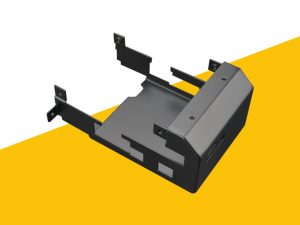
When formulating improvement measures for the collaborative work of equipment management and environmental control, the following issues need to be noted:
I. Targeted nature
1. Analyze specific problems: Carefully study the specific problems that occur in the collaborative work of equipment management and environmental control, and clarify the root causes and scope of influence of the problems. For example, if it is found that the equipment failure rate increases in a specific season, it is necessary to analyze whether it is caused by environmental factors (such as changes in temperature and humidity) or equipment management links (such as untimely maintenance).
2. Formulate precise measures: According to the results of problem analysis, formulate targeted improvement measures. If the excessive environmental temperature affects the equipment performance, air conditioners or heat dissipation equipment can be considered for installation; if the equipment maintenance plan does not match the environmental changes, the maintenance frequency and content need to be adjusted to meet the environmental needs.
II. Feasibility
1. Consider resource conditions: Evaluate the resources required for improvement measures, including human, material, and financial resources. Ensure that the measures can be effectively implemented under the enterprise’s existing resource conditions. For example, installing a large-scale air purification system may require a relatively high cost investment, and the enterprise’s budget affordability needs to be considered. 2. Technical feasibility: Ensure that the improvement measures are technically feasible. Consult professional technicians to understand the implementation difficulties and potential risks of the measures. For example, some new environmental control technologies may have good effects in theory, but there may be problems of immature technology or compatibility in practical applications.
III. Coordination
1. Coordination with the overall management system: The improvement measures should be coordinated with the enterprise’s overall equipment management and environmental control system and cannot conflict with the existing management systems and processes. For example, the new equipment maintenance process should cooperate with the environmental monitoring plan to ensure timely equipment maintenance when the environment changes.
2. Interdepartmental coordination: Since collaborative work involves multiple departments, the improvement measures need to be recognized and cooperated by various departments. Establish an effective communication mechanism to ensure that each department clearly understands its own responsibilities and tasks and jointly promotes the implementation of improvement measures. For example, the equipment management department and the environmental control department should jointly formulate equipment selection standards to ensure that the selected equipment not only meets the equipment performance requirements but also adapts to the environmental conditions.
IV. Sustainability
1. Establish a long-term mechanism: Improvement measures cannot be just temporary emergency measures. A long-term management mechanism should be established to ensure that the problem does not recur. For example, formulate a regular equipment and environment assessment system to continuously monitor and improve the collaborative work effect.
2. Training and education: Provide training and education to employees so that they understand the importance of improvement measures and specific operation methods to ensure the effective implementation of the measures. At the same time, encourage employees to put forward improvement suggestions and continuously improve the collaborative work mechanism.






